10 Dirty Areas in Your Home That Are Affecting Your Health

We all strive to keep our homes clean, but some of the dirtiest spots are often overlooked, and they could be affecting your health in ways you might not realize.
Dust, mold, bacteria, and allergens can accumulate in certain areas of your home, leading to issues like allergies, asthma, skin irritations, and respiratory problems.
Let’s take a closer look at these problem areas and learn how to clean them properly to maintain a healthy living environment.
Table of contents
Disclaimer: Simplify may receive a small affiliate commission from purchases made via links in this article but at no cost to you.
1. Carpets and Rugs
Why They’re a Problem:
Carpets and rugs are magnets for dust, dirt, pet dander, and allergens. Over time, these contaminants settle deep into the fibers, where vacuuming alone can’t reach. If not cleaned regularly, carpets can trigger allergies, asthma, and other respiratory issues, especially in homes with pets.
How to Clean Them:
- Vacuum weekly: Use a vacuum cleaner with a HEPA filter to trap allergens.
- Deep clean every 6-12 months: Use a steam cleaner or hire a professional to remove embedded dirt and bacteria.
Wagner Spraytech C900054 905e AutoRight Multi-Purpose Steam Cleaner
- Spot clean as needed: For spills or pet accidents, clean immediately with an enzymatic cleaner to prevent stains and odors.
Rocco & Roxie Supply Co. Stain & Odor Eliminator
For more pet-related cleaning hacks, read Calling All Pet Owners: You Need These 6 Genius Cleaning Products.
2. Mattresses and Bedding
Why They’re a Problem:
Your mattress can harbor dust mites, dead skin cells, and sweat, which can aggravate allergies and affect sleep quality. Bedding, especially pillowcases, can also collect oils and bacteria from your skin.
How to Clean Them:
- Wash bedding weekly: Use hot water to kill dust mites and remove allergens.
- Vacuum your mattress every month: Use your vacuum’s upholstery attachment to clean the surface of your mattress.
Upholstery Attachment for Vacuum Cleaner
- Deep clean your mattress every 6 months: Sprinkle baking soda over the mattress, let it sit for a few hours, then vacuum it off to deodorize and absorb moisture.
ARM & HAMMER Baking Soda Made in USA
- Use mattress and pillow protectors: These can help prevent dust mites and allergens from accumulating.
Utopia Bedding Quilted Fitted Mattress Pad (Queen)
Utopia Bedding Waterproof Pillow Protector Zippered (2 Pack)
3. Bathroom Surfaces (Grout, Shower, Sink)
Why They’re a Problem:
Mold, mildew, and bacteria love damp environments like your bathroom. Grout, tile, showerheads, and sinks can all harbor harmful microbes, which can lead to skin irritations, respiratory issues, and infections if not regularly cleaned.
How to Clean Them:
- Grout and tile: Use a mixture of baking soda and water to scrub grout lines. For tougher mold or mildew stains, use a bleach solution or a commercial mold remover.
RMR-86 Instant Mold and Mildew Stain Remover Spray
- Showerheads: Soak your showerhead in white vinegar for a few hours to remove mineral buildup and bacteria.
Lucy's Family Owned - Natural Distilled White Vinegar, 1 Gallon (128 oz)
- Sinks and faucets: Disinfect sinks and faucets regularly with a bathroom cleaner or a solution of water and vinegar to kill bacteria and prevent mold growth.
4. Kitchen Sponges and Dish Cloths
Why They’re a Problem:
Kitchen sponges and dish cloths are breeding grounds for bacteria, including E. coli and salmonella, especially if they stay damp for long periods. Using dirty sponges and cloths can spread bacteria to countertops, dishes, and hands, potentially causing foodborne illnesses.
How to Clean Them:
- Microwave sponges: Wet the sponge and microwave it for 1-2 minutes to kill bacteria. Do this every couple of days.
- Wash dish cloths frequently: Toss dish cloths in the laundry after every few uses and wash them with hot water.
- Replace sponges often: Sponges should be replaced every 1-2 weeks, depending on use.
Scotch-Brite Zero Scratch Scrub Sponges
Homaxy 100% Cotton Waffle Weave Kitchen Dish Cloths
5. HVAC Vents and Air Filters
Why They’re a Problem:
Your heating, ventilation, and air conditioning (HVAC) system can accumulate dust, mold, and other airborne particles over time. If the filters are dirty or the vents aren’t cleaned, your HVAC system can circulate these pollutants throughout your home, affecting indoor air quality and triggering allergies or asthma.
How to Clean Them:
- Replace air filters every 1-3 months: Use high-efficiency filters to trap smaller particles like allergens and mold spores.
Simply Filters 14x24x1 MERV 8, MPR 600, Air Filter (6 Pack)
- Clean vents and registers: Dust or vacuum HVAC vents and registers regularly to remove built-up dust.
- Schedule annual HVAC maintenance: Hire a professional to clean the ductwork and perform maintenance to keep your system running efficiently.
6. Refrigerator Drawers and Seals
Why They’re a Problem:
Refrigerator drawers and seals are often overlooked during cleaning, but they can harbor mold, bacteria, and foodborne pathogens. These germs can contaminate fresh produce and other items stored in your fridge, posing a risk to your health.
How to Clean Them:
- Wipe down drawers regularly: Use a solution of water and vinegar or a mild soap to wipe down the inside of the drawers.
- Clean fridge seals: Scrub the rubber seals around the fridge door with warm, soapy water or a mixture of vinegar and water to remove mold and bacteria.
- Deep clean every few months: Remove all items from your fridge, and clean the entire interior, including shelves and drawers.
7. Electronics (Remotes, Phones, Keyboards)
Why They’re a Problem:
Remotes, phones, and keyboards are frequently touched but rarely cleaned. These items can accumulate bacteria, dirt, and oils, which can be transferred to your skin or mouth, leading to infections or illness.
How to Clean Them:
- Wipe down daily: Use a disinfectant wipe or alcohol-based cleaner to wipe down remotes, phones, and keyboards regularly.
Clorox Disinfecting Wipes Value Pack
- Don’t forget small crevices: Use a cotton swab or a toothbrush to clean dirt from around buttons or in small crevices.
For more tips on cleaning tricky areas, read Specialized Cleaning Brushes for Those Hard-to-Reach Areas.
8. Pet Beds and Toys
Why They’re a Problem:
Pet beds, toys, and blankets can be full of pet hair, dander, bacteria, and even fleas, all of which can affect indoor air quality and cause allergic reactions or skin irritations for both you and your pet.
How to Clean Them:
- Wash pet bedding regularly: Throw pet bedding, blankets, and soft toys into the washing machine every 1-2 weeks.
- Clean hard toys: Wash plastic or rubber toys with warm, soapy water and disinfect them regularly.
- Vacuum pet areas frequently: Vacuum areas where your pets spend time to keep hair, dander, and dust under control.
9. Window Sills and Blinds
Why They’re a Problem:
Dust, mold, and allergens can easily accumulate on window sills, blinds, and curtains. Over time, these particles can become airborne, leading to poor indoor air quality and triggering allergies or asthma symptoms.
How to Clean Them:
- Dust regularly: Use a microfiber cloth or duster to remove dust from window sills and blinds.
HOMEXCEL Microfiber Cleaning Cloth,12 Pack Cleaning Rag
- Wash curtains: Clean curtains every few months by machine washing (if fabric allows) or using a handheld vacuum.
- Wipe down window frames: Use a damp cloth to wipe away any dirt or mold that may accumulate around the window frames.
10. Garbage Cans
Why They’re a Problem:
Garbage cans, especially in the kitchen and bathroom, can accumulate bacteria, mold, and foul odors if not cleaned regularly. This can contribute to bad indoor air quality and even attract pests.
How to Clean Them:
- Clean weekly: Rinse out garbage cans with hot, soapy water at least once a week to remove bacteria and food residue.
- Disinfect after spills: If liquids or food leak into the can, use a disinfectant to kill germs and prevent odors.
Lysol Disinfectant Spray, Household Essential Cleaning Supplies
- Use liners: Always use garbage bags or liners to minimize contact with the actual can and make cleaning easier.
Hefty Ultra Strong Tall Kitchen Trash Bags, Lavender & Sweet Vanilla Scent
Conclusion
Cleaning your home is more than just about appearances—it’s about protecting your health. By paying attention to these often-overlooked areas and cleaning them regularly and properly, you can significantly reduce allergens, bacteria, and mold in your home.
In return, you’ll enjoy a healthier, cleaner living space that’s better for both you and your family.
































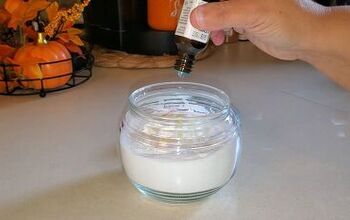





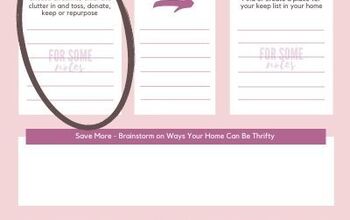
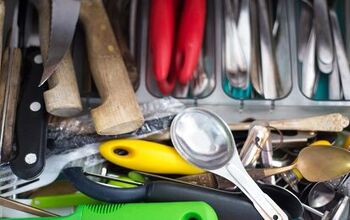

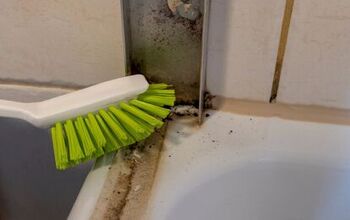


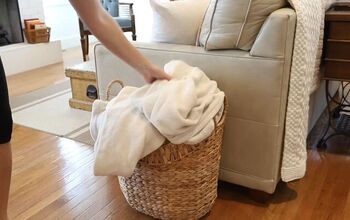




Comments
Join the conversation